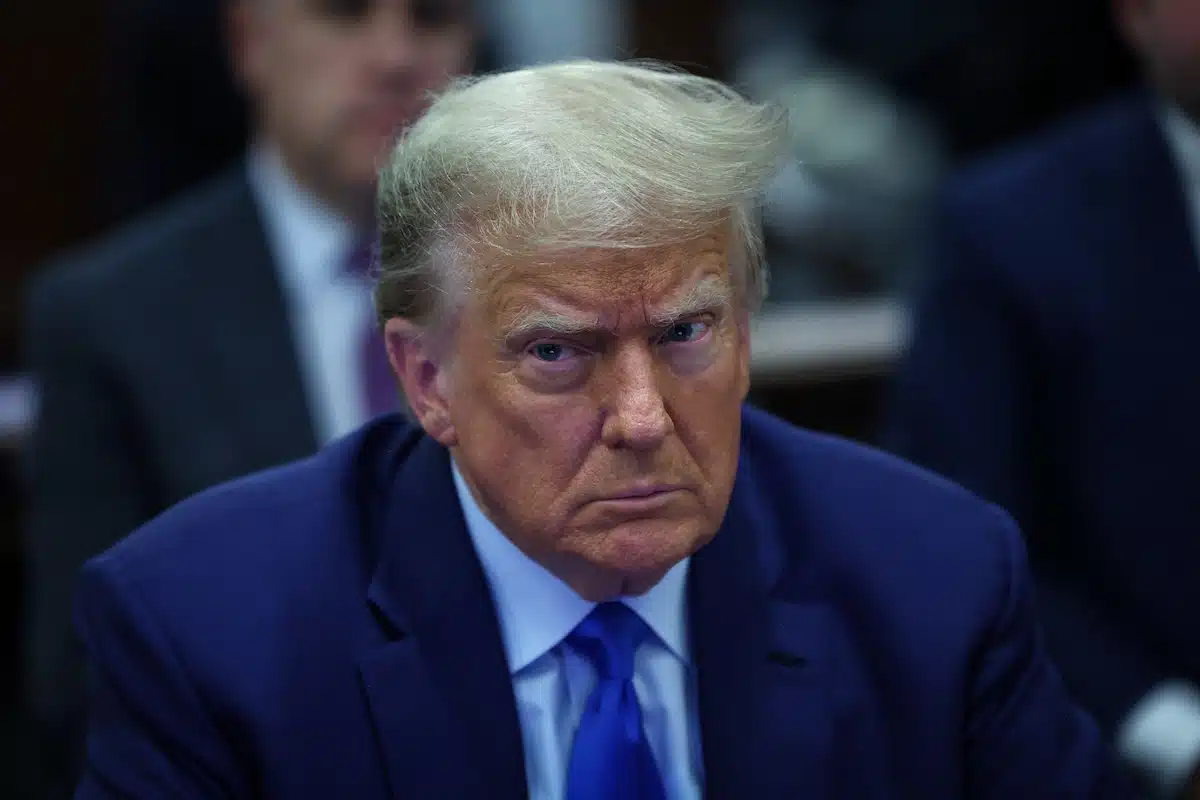In recent months, the U.S. Federal Reserve has raised interest rates at the fastest pace in forty years to combat historic inflation. While attention is focused on the Middle East, rising prices persist in the United States, and yields on U.S. Treasury bonds are reaching peaks, forcing the Fed to make increasingly difficult choices. The United States must brace itself for a significant crisis that will shake up the presidential elections in 2024.
In September, prices increased by 3.7% year-on-year in the United States, nearly twice the central bank’s well-known target of 2%. Despite being deemed ‘too high’ by President Jerome Powell, no rate hike is expected in the coming weeks, as the U.S. benchmark interest rate remains in the range of 5.25% to 5.5%. The Fed is indeed seeking to avoid a scenario similar to the banking crisis last March, which could quickly escalate into contagion.
A two-phase monetary policy
A real fight against inflation? According to Jerome Powell: ‘We have to let things unfold, but for now, it is clearly a tightening of financial conditions.’ However, if we focus on the closely monitored data by investors – that of positive real interest rates (interest rates adjusted for inflation) – monetary policy has only been restrictive for a few months. For over a year, between the first interest rate hike by the Federal Reserve in March 2022 and April 2023, inflation remained higher than interest rates. Borrowing at rates lower than inflation was, therefore, not a normalization situation but still a monetary ease, facilitating loan repayment and thus stimulating borrowing demand. A situation that prevailed over the past decade and meant that the future was considered more certain than the present… Interest rates are not only synonymous with the price of risk but also the price of time.
If the fight against rising prices began last April, inflation experienced a new acceleration in the last two months. Geopolitical tensions and the OPEC countries’ desire to destabilize the Biden administration led to a restriction of their oil production to maintain high prices and ensure significant revenues as the world is still largely dependent on fossil fuels. The expected effects have occurred as the U.S. Consumer Price Index rose from 3% in June to 3.2% in July, then to 3.7% in August and September.
The vice tightens in the United States
As credit conditions tighten and inflation persists, investors are demanding increasingly higher yields. No pivot in monetary policy – meaning a decrease in interest rates – is expected, given the acceleration of inflation. Markets estimate a less than 30% chance of another short-term interest rate hike by the Fed this year. Geopolitical context, the return of protectionism, and above all, the abyssal U.S. deficit and debt are all factors that increase the famous ‘risk premium’ and ultimately sovereign rates. The supply of U.S. bonds is growing much faster than demand. The 10-year yield on U.S. Treasury bonds, which remains the benchmark in finance, continues to rise and is now approaching 5% – a level not seen in 16 years. Other market rates are following this upward trend. The U.S. 2-year yield surpasses 5%, a sign that the short term is more dangerous than the long term according to the market. On the household side, the average rate for a 30-year fixed-rate mortgage has reached 8% for the first time since 2000, making access to housing extremely difficult for millions of Americans. Rates on credit cards and all banking credits, in general, continue to rise, which will naturally lead to a decline in consumption over time.
By extension, these increases lead to a decline in the markets. As interest rates rise, the value of bonds decreases and affects the collateral in interbank loans. Investors are thus engaging in successive sales to provide more liquidity to maintain their position – when possible. Over the past few weeks, the leading American stock indices, namely the S&P500 and the Dow Jones, have been showing a gradual decline.
The U.S. economy is holding up, for now
The flip side of this situation is indeed the resilience of the U.S. economy. The massive stimulus plan by the Biden administration and substantial liquidity support from the Fed effectively limit the consequences of the restrictive monetary policy despite a credit contraction. Moreover, the diversification of the U.S. economy helps sustain growth.
The labor market remains extremely tight, as evidenced by job creations exceeding expectations, and retail sales defy predictions of a slowdown.
However, it seems inevitable that in the coming months, the U.S. economy will bend. The Federal Reserve’s monetary tightening will continue to weigh on economic activity until the cycle eventually turns. The transmission lag of monetary policy is gradual (12 to 18 months according to economists), and real interest rates have been positive for only six months. As in the 1970s, late 1980s, or early 2000s, the fight against inflation will lead to a deep recession, accompanied by a significant rise in unemployment, a drop in growth, and troubled financial markets. Unlike the ECB, whose main objective is price stability, the Fed has the role of ensuring stable growth and low unemployment rates.
